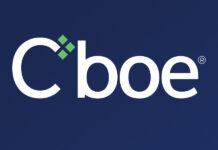
The DESK and Jane Street first met in 2014 at FILS – we speak with Ian Shea, Head of Fixed Income Trading.
How has your business changed in the the last ten years?
When we first met, we had just launched our institutional client business. Since then, we have grown our client engagement organically in ways that leverage our 20+ years of experience trading ETFs, the underlying components, and options.
In 2018, we began trading bonds directly with institutional clients. More recently, we have expanded to include listed options, listed futures, and currencies. In 2023, we traded over $2T directly with clients across all asset classes, including US$1.2T in ETFs and US$490B in bonds. Our institutional sales and trading offering is integral to our firm and we consistently look for opportunities to provide differentiated liquidity to the market.
What are the building blocks of increased electronification in bond markets?
The 2008 financial crisis was a change catalyst for bond markets, creating a need for alternative liquidity sources as traditional dealers reduced inventories and market-making activities in response to tighter bank capital requirements. In tandem, regulators and investors sought greater market transparency and emphasised best execution.
Electronic platforms emerged as an important tool to match buyers and sellers directly and address regulators’ best execution concerns. These venues allowed simultaneous competitive quoting from multiple dealers, supporting deeper price discovery through an electronic process that provides post-trade reporting and audit trails, also helping to satisfy TCA needs.
Lastly, passive management growth, increased volatility and the instruments’ structural benefits drove the use of fixed income ETFs as a tool to efficiently transfer risk. When bond markets are stressed, some market participants may reduce their trading activity or withdraw from the market entirely, causing the need for investors to adjust their strategies to navigate the thinner market liquidity. Many institutional investors adopting new product types into their portfolios desired a multi-asset protocol to manage their trading efficiently.
How have these evolved over the last ten years and what changes will we continue to see?
Electronic platforms’ share of overall credit trading activity continues to expand. In the US, it has grown from 25% in January 2020 to 45% today, translating to 49% of investment grade and 35% of high yield bond volume trading electronically. Although harder to assess due to reporting fragmentation, Coalition Greenwich estimates Europe has greater electronic market share than the US. Latest estimates show over 60% of IG and 49% of HY bond volumes are traded electronically in Europe.
Portfolio trading continues to see broad global institutional investor adoption as a valuable protocol to efficiently shift fixed-income exposures. Sizing market share has recently become possible through a TRACE modifier adopted in May 2023. Prior to this, Coalition Greenwich had estimated portfolio trading (PT) was 3-5% of the total market, but 2024 TRACE data shows PT is currently over 8% and closer to an average of 18% at month end. A similar flag was implemented for the EU in January of this year. While it awaits broad implementation, it is a positive step in the right direction of bringing further transparency to the bond market.
Could you describe the way algorithmic trading is developing and impacting market activity?
Algorithmic trading is a two-part story – for liquidity providers, an algo is key to participating in growing market volumes, and for clients, algo trading and automated execution are newer focus areas.
Algo trading is a key differentiator for competing liquidity providers and fuels continued electronification by instilling confidence in electronic venue liquidity. At Jane Street, we price upwards of 50,000 daily inquiries in seconds across a range of sizes and a large universe of IG, HY and EM ISINs. By pairing strong algo capabilities with a team of human traders, we are able to assess risk and fine-tune liquidity strategies for clients flexibly across single-line items, bond portfolios, and fixed income ETFs.
On the client side, algo usage is still developing. Clients are exploring algo and auto-execution offerings from electronic platforms or building tools in-house to scale their liquidity seeking, including through auto-responding to inquiries. Greater availability of pre-trade data and analytics supports this decision-making process. Auto-execution and trade workflow automation tools complement other efficient risk transfer protocols like portfolio trading that clients have adopted.
Which aspects of market structure are most challenging to navigate today?
Even as electronification has increased and market structure has matured, adoption of electronic protocols for larger-size trades has remained a challenge. Increasingly, liquidity providers’ algo offerings are able to quote larger sizes and manage the associated risks and balance sheet considerations, but portions of the market in larger size trades remain off-platform.
Both clients and liquidity providers who are not party to these larger-size trades are information disadvantaged which discourages confident liquidity provision. From a client perspective, those voice trades do not benefit from the same degree of competition and best execution workflows. While this dynamic exists across geographies, the associated challenges are heightened in markets like European and UK credit where pre and post trade transparency is more limited.
Another challenge is the mismatch between client interest in using pre-trade streaming pricing to drive RFQs, and the current reality that most streaming pricing is not as high quality as competitive RFQ pricing. Since non-firm IOIs are used to indicate willingness to trade, but ultimately performance is not benchmarked to those IOIs, workflows that base RFQ inclusion on IOIs can sometimes yield suboptimal results. Until bond market structure evolves toward a shared expectation of firm streaming pricing, it is important for client traders to balance IOIs alongside other quality indicators like liquidity provider performance and response rates when selecting the right mix of dealers on an RFQ.
How and where do you see Jane Street’s business expanding liquidity provision in the next 12 to 24 months?
Our growth plans centre on continuing to find innovative ways to support our clients’ evolving liquidity needs. This summer, we expanded our bond offering to include single-line dealing in EM hard currency credit. We believe we can bring value to the market by combining quantitative modelling with a large team of human traders, allowing us to thrive in complex markets, manage principal risk, and offer competitive pricing on difficult-to-price trades.
We’ve found that our client base values our performance stability and consistency of liquidity provision across all market conditions. While volatility has abated from Covid-19 highs, we’ve seen recent market shocks such as the rate hiking cycle and the 5 August selloff cause liquidity to be in high demand. On that day, we traded more than US$9B across all products with our European clients, 170% more than the daily average of the prior 100 days, and were the #1 dealer in EUR IG on MarketAxess and Bloomberg platforms. We remain focused on aligning our risk management capabilities with client needs, especially in times when they may need liquidity the most.
©Markets Media Europe 2025












